MCQ (Solution) - Keeping Time with the Skies | Science Curiosity Class 8 - New NCERT PDF Download
Question 1:
Why do the phases of the Moon occur as seen from Earth?
Option A: Earth’s shadow falls on the Moon every night
Option B: The Moon emits different amounts of light on different days
Option C: We see varying fractions of the Moon’s sunlit half as it revolves around Earth
Option D: Clouds block parts of the Moon periodically
 View Answer
View Answer 
Answer: Option C
Solution:
- The Moon shines by reflected sunlight; as it orbits Earth, the sunlit half is oriented differently with respect to us, so the visible fraction changes (phases).
- Lunar eclipses (Earth’s shadow on the Moon) are rare and cannot explain daily phases; the Moon does not generate its own light.
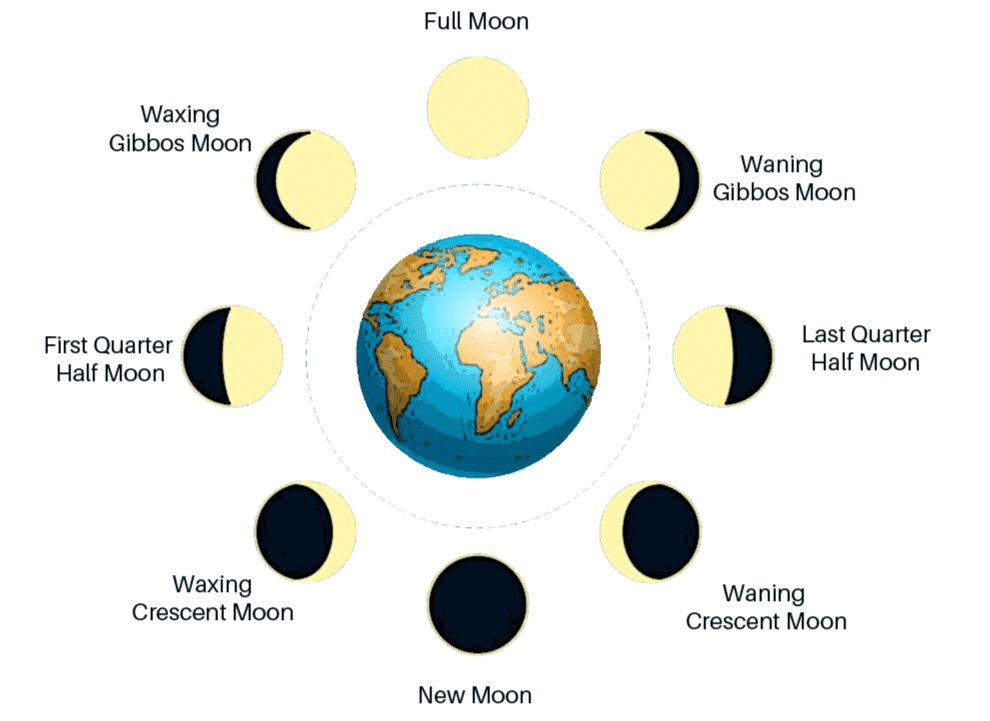
Question 2:
Which pair of phase names correctly describes “less than half” and “more than half” of the Moon’s illuminated portion visible from Earth?
Option A: Crescent (less), gibbous (more)
Option B: Gibbous (less), crescent (more)
Option C: New Moon (more), Full Moon (less)
Option D: First quarter (less), third quarter (more)
 View Answer
View Answer 
Answer: Option A
Solution:
- Crescents show less than half illuminated; gibbous phases show more than half illuminated.
- Quarter (half) phases show exactly half of the sunlit side visible.
Question 3:
On which alignment is a New Moon possible, and where is the Moon relative to the Sun in the sky?
Option A: Moon–Earth–Sun; opposite the Sun (all night visible)
Option B: Sun–Moon–Earth; near the Sun in the sky (daytime vicinity)
Option C: Earth–Sun–Moon; Moon overhead at midnight
Option D: Sun–Earth–Moon; far from the Sun in the sky
 View Answer
View Answer 
Answer: Option B
Solution:
- At New Moon, the Moon is between Sun and Earth; its dark side faces us, and it appears closest to the Sun’s direction.
- Full Moon (Moon–Earth–Sun) is opposite the Sun and rises near sunset.
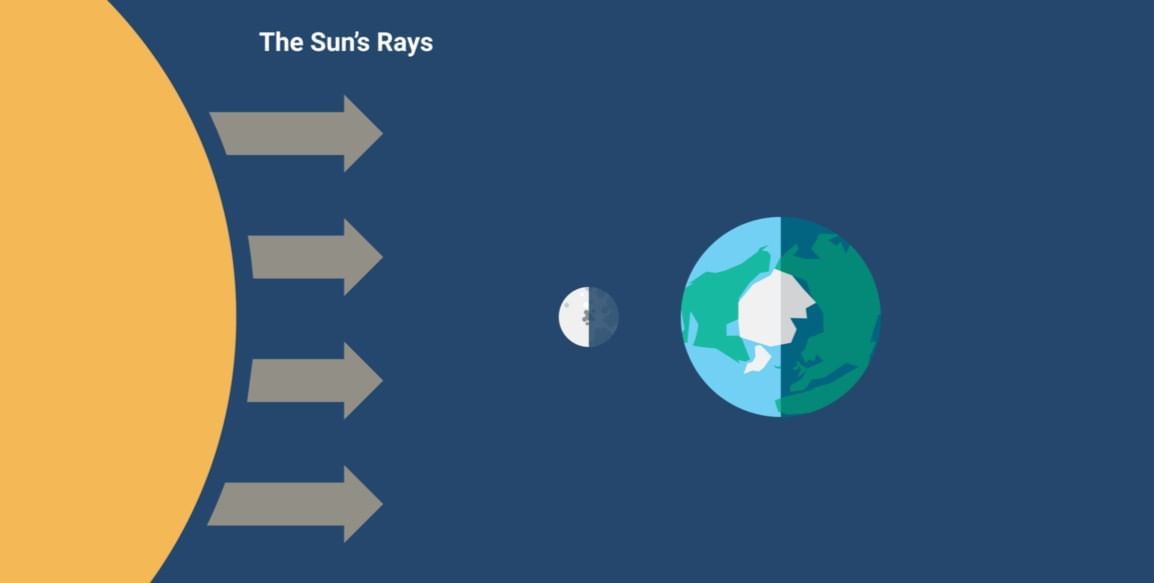 New moon
New moon
Question 4:
Why does the Moon rise about 50 minutes later each successive day?
Option A: Earth’s rotation slows down daily
Option B: Atmospheric refraction delays moonrise
Option C: The Sun’s rising time shifts by 50 minutes daily
Option D: The Moon moves forward in its orbit while Earth completes a rotation
 View Answer
View Answer 
Answer: Option D
Solution:
- As Earth rotates in ~24h, the Moon also advances along its orbit; Earth must rotate a bit more (~50min) for the Moon to reach nearly the same sky position.
Question 5:
Which of the following is correct about waxing and waning?
Option A: Waxing: bright part decreases; Waning: bright part increases
Option B: Waxing: bright part increases; Waning: bright part decreases
Option C: Waxing occurs after Full Moon; Waning occurs after New Moon
Option D: Both waxing and waning occur only near eclipses
 View Answer
View Answer 
Answer: Option B
Solution:
- Waxing (Shukla Paksha) goes from New to Full; waning (Krishna Paksha) goes from Full to New, with the visible lit fraction growing or shrinking respectively.
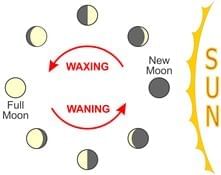
Question 6:
Which statement best distinguishes lunar, solar, and luni-solar calendars?
Option A: Lunar follows Moon’s phases; solar follows Sun/season cycle; luni-solar follows Moon with adjustments to match seasons
Option B: Lunar uses seasons; solar uses phases; luni-solar uses neither
Option C: All three use only the tropical year
Option D: Only lunar calendars use leap adjustments
 View Answer
View Answer 
Answer: Option A
Solution:
- Lunar counts months by phases (~29.5d), solar by seasons (~365d), and luni-solar inserts intercalary months to keep lunar months in step with seasons.
Question 7:
Why do festivals based on purely lunar calendars (e.g., Eid-ul-Fitr) shift through different months of the Gregorian year?
Option A: The lunar year is ~11 days shorter than the solar year, so dates drift earlier each solar year
Option B: The lunar year is longer than the solar year
Option C: The Moon’s distance changes the month length randomly
Option D: Leap years push lunar dates forward
 View Answer
View Answer 
Answer: Option A
Solution:
- 12 lunar months ≈354 days; without intercalation, festivals occur ~11 days earlier each solar year, cycling through Gregorian months over time.
Question 8:
Which feature specifically keeps the Gregorian calendar synchronized with seasons over long periods?
Option A: Adding a day every 3 years always
Option B: Leap years every 4 years, skipping century years not divisible by 400
Option C: Monthly extra hours added to February
Option D: Counting the sidereal year only
 View Answer
View Answer 
Answer: Option B
Solution:
- The Gregorian rule: leap year every 4 years, except centuries unless divisible by 400, aligns the civil year closely with the tropical year (seasons).
Question 9:
Which statement about the Indian National Calendar (Saka) is correct?
Option A: It begins on 1 January each year
Option B: It is a lunar calendar with 29 or 30-day months
Option C: It is a solar calendar beginning near the spring equinox, with fixed 30/31-day months and leap adjustment in Chaitra
Option D: It is purely sidereal with no leap-day concept
 View Answer
View Answer 
Answer: Option C
Solution:
- The Indian National Calendar starts around March 22 (March 21 in leap years), months are 30/31 days, and Chaitra gains a day in leap years to stay aligned.
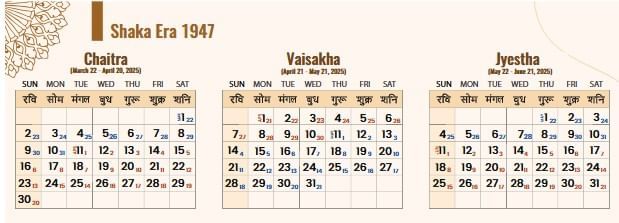 Indian National Calendar
Indian National Calendar
Question 10:
Why don’t we have eclipses every Full Moon or New Moon?
Option A: The Moon is not spherical
Option B: Earth doesn’t cast a shadow
Option C: The Moon’s orbital plane is slightly tilted relative to Earth’s orbital plane, so alignment is not exact most months
Option D: The Sun’s light bends around Earth
 View Answer
View Answer 
Answer: Option C
Solution:
- Lunar and solar eclipses require precise Sun–Earth–Moon alignments; the Moon’s orbital tilt usually prevents exact alignment on most New/Full Moons.
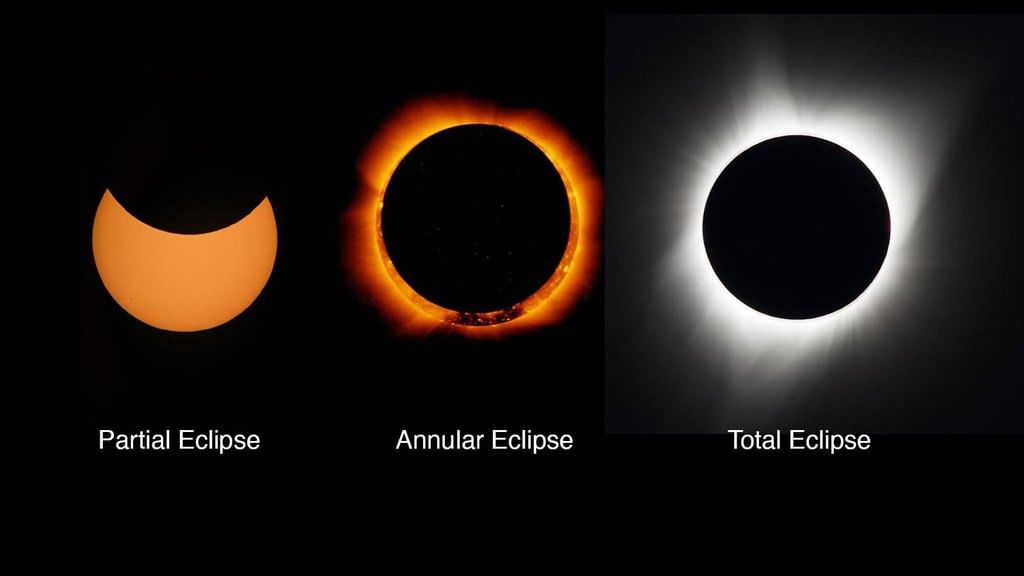
Question 11:
Which observation correctly links a Moon phase with approximate sky timing?
Option A: Full Moon highest near noon
Option B: Waxing crescent best seen after sunset
Option C: Waning crescent best seen after sunset
Option D: First quarter only visible at dawn
 View Answer
View Answer 
Answer: Option B
Solution:
- Waxing phases are easiest in evening skies (growing away from the Sun after sunset); waning crescents are morning-sky objects, seen before/at sunrise.
Question 12:
What is the physical meaning of a “mean solar day” (~24 hours)?
Option A: Time between two successive Moonrises
Option B: Time between the Sun’s successive highest positions (noons), averaged over the year
Option C: Exact interval of Earth’s sidereal rotation
Option D: Exact time between two sunsets every day
 View Answer
View Answer 
Answer: Option B
Solution:
- The mean solar day averages the Sun’s apparent noontime-to-noontime interval over the year, defining the civil 24-hour day.
Question 13:
In a luni-solar calendar, why is an intercalary (Adhika) month added every 2–3 years?
Option A: To correct the ~11-day annual shortfall of 12 lunar months against the solar year
Option B: To match lunar months to weekdays
Option C: To keep months aligned with eclipses
Option D: To remove festival date shifts within the lunar year
 View Answer
View Answer 
Answer: Option A
Solution:
- Since 12 lunar months (~354 days) fall short of the solar year (~365 days), an extra lunar month is inserted periodically to stay synchronized with seasons.
Question 14:
Which is a correct statement about artificial satellites commonly seen from Earth?
Option A: They are stationary stars that twinkle
Option B: They are visible only with telescopes
Option C: They only appear during total eclipses
Option D: They move steadily across the sky, often just after sunset or before sunrise, completing low-Earth orbits in roughly ~100 minutes
 View Answer
View Answer 
Answer: Option D
Solution:
- LEO satellites reflect sunlight shortly after dusk or before dawn, appearing as fast-moving points (non-twinkling), often circling Earth in ~1.5–2 hours.
Question 15:
Which pairing correctly links a time unit with the natural periodic phenomenon it’s based on?
Option A: Day → Moon’s revolution; Month → Earth’s rotation; Year → Earth’s rotation
Option B: Day → Earth’s rotation; Month → Moon’s phase cycle; Year → Earth’s revolution (seasons)
Option C: Day → Earth’s revolution; Month → eclipses; Year → Moon’s revolution
Option D: Day → Sun’s revolution; Month → comets; Year → stellar twinkling
 View Answer
View Answer 
Answer: Option B
Solution:
- Day is tied to Earth’s rotation (solar day); month to the Moon’s synodic phase cycle (~29.5 days); year to Earth’s revolution around the Sun (seasons).
|
59 videos|236 docs|13 tests
|
FAQs on MCQ (Solution) - Keeping Time with the Skies - Science Curiosity Class 8 - New NCERT
| 1. What are the primary methods used in ancient times to keep time with the skies? |  |
| 2. How did the invention of clocks change timekeeping practices? |  |
| 3. What role did the stars play in navigation before modern technology? |  |
| 4. Why is the study of celestial bodies important for understanding time? |  |
| 5. How did ancient civilizations use celestial observations to develop calendars? |  |
















